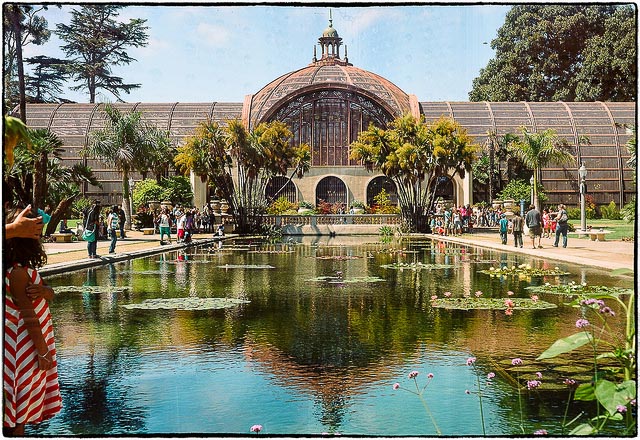For mayors facing a tough budgetary environment, the easiest way to start cutting is to look at items that feel like they’re luxuries: public art and parks improvements, for example, can often find themselves on the chopping block.
But that’s entirely the wrong approach, says Vicki Estrada, a California-based urban designer whose firm often works with local governments.
Estrada is visiting the Kinder Institute for Urban Research this week as part of the Mayors' Institute on City Design – West in Houston. At the conference, mayors of mid-sized cities from around the west and southwest will bring vexing development issues for rigorous workshopping from a team of design experts.
Those conversations are confidential. But we wanted to glean some insights from the Mod Squad of experts that’s coming to town.
So we asked a few of those experts for their take on the same basic questions. Vicki Estrada is a landscape architect whose past projects include San Diego’s Balboa Park Master Plan and the San Diego Convention Center, among other work. This interview has been lightly edited and condensed for clarity.
Andrew Keatts: If you could wave a magic wand, what is the one concept or idea you wish all mayors would learn and understand?
Vicki Estrada: I find that what’s missing for most mayors I’ve talked to is the importance of good design relative to our health. And by our health I mean our mental and our physical health. There have been many studies done. Stress levels fall if you live on a street with trees. There have been studies out of the University of Illinois at Urbana-Champaign that show 6th grade girls have twice the self-esteem as those that don’t live on a street with street trees.
But always, what’s the first thing cut? It’s aesthetics. And public art. People say, “Oh, it’s just pretty. We don’t need that.” And if there was one thing for mayors to learn, it’s that aesthetics is not just a luxury. It’s a necessity for us as humans to live in a physical environment that actually makes us feel good.
AK: Do you feel mayors and other elected officials too often make decisions that design and aesthetics are less important than…
VE: Potholes! It’s not like they’ll flat out say that. It’s their actions. Look at the budgets. Across the board, almost throughout the whole country, arts and aesthetics are the first things cut. So they might not flat out say “Oh, you know what, potholes are more important than public art,” but they don’t cut the budget for potholes. They cut the budget for aesthetics.
AK: So what are the things mayors could tangibly do to increase the aesthetic appeal of their cities, beyond funding public art projects?
VE: One of the first things, as we just talked about, is the budget. The mayor usually sets the budget, and the council approves it. If in the very beginning, our mayors gave streetscapes, aesthetics and parks a higher priority, then they’re less likely to be cut at the end. And if the mayor doesn’t give them much money, rarely do you see a city council that says, “let’s add more money for parks!” So that’s one thing they could do: when they actually set the budget, emphasize those things that we’re forgetting about.
Second, any big project that comes up that’s private – and even public – developers will meet with the mayor and staff and show them the project and get them behind things. I would like the mayor to say, “I like that project, but I don’t quite support it yet. I think it needs a bike lane with a double row of trees on one side, and better connectivity to your neighborhood parks.”
I’d like to have a mayor know a little bit more design-wise. It’s about educating mayors, because most mayors, I suspect, don’t know as much about design. There are exceptions, of course.

